We are in the business of designing butterfly gardens, pollinator gardens, and ecological landscapes to support biodiversity. GJL firmly believes enhancing biodiversity is they key to healthy, resilient landscapes, that in turn provide human health benefits.
This post is part two of our series on How to Make Our Landscapes Safer & Healthier. Catch up on Part One, where we discuss organic landscapes and building soil health through microbes.
Biodiversity is Worth Protecting
Biodiversity is the sign of a healthy ecosystem. It means conditions exist that support many different species at once; it also refers to the genetic diversity within a species.
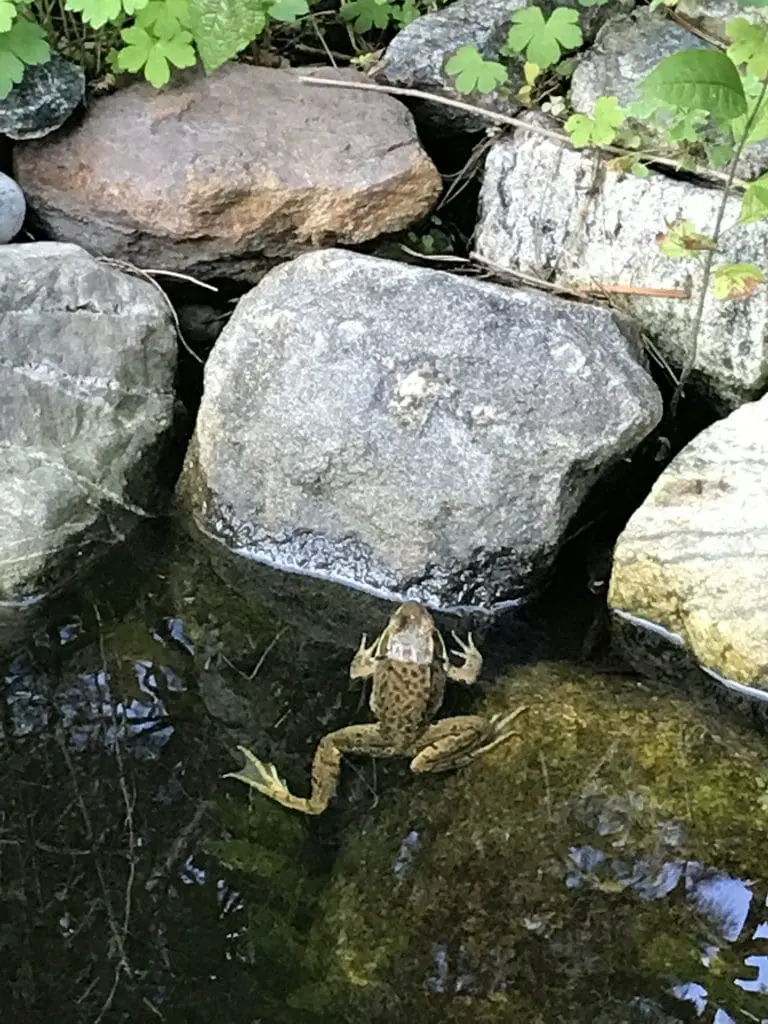
Why should you care about biodiversity? With higher biological diversity, ecosystems can react better to environmental stressors – in a word, they are more resilient, and we need resilient ecosystems, especially in the era of climate change. In fact, one of our partners, Healthy Yards Westchester, lists inviting pollinators and wildlife as a foundational step in creating health yards that better our environment. Furthermore, healthy ecosystems are more productive and better provide ecosystem services, like clean water, clean air, nutrient cycling, and plant resources.
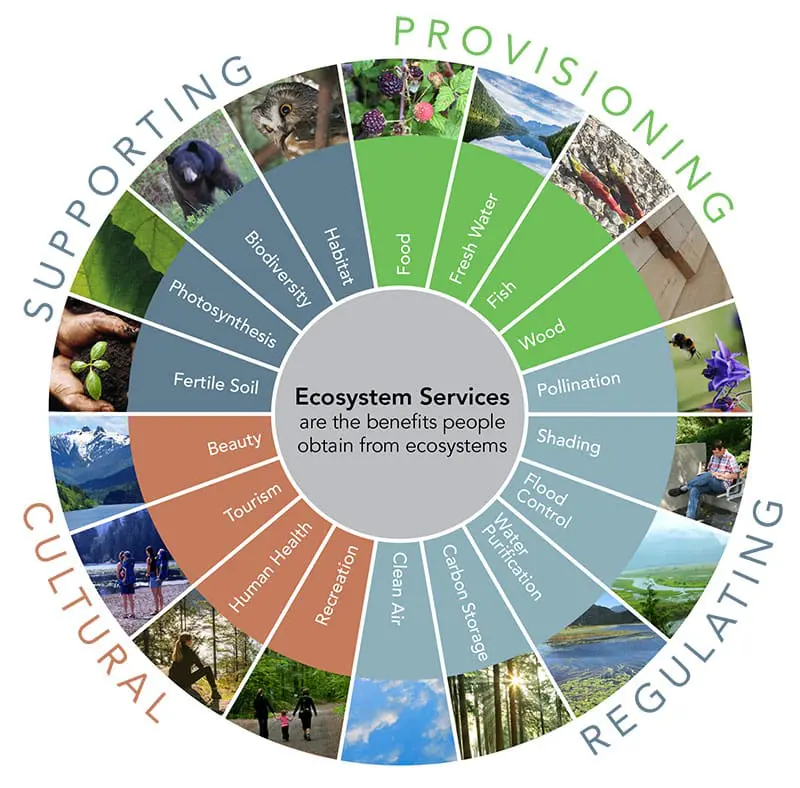
For example:
- Healthy soil has a diversity of microbes to breakdown organic matter, without which we would have little to no nutrient cycling!
- Specific plants co-evolved with specific soil microbes to provide each other nutrients (see tip #2). A loss on one side could be detrimental for the other species and start a chain reaction through the ecosystem.
- Soil microbes also play a huge role in natural water purification, especially in wetland and riparian soils. Microbes breakdown chemical and biological pollutants in the water.
- Wetland ecosystems are responsible for removing 20-60% of the metals in water, thanks to microbial break down, and uptake and storage by specifically adapted wetland plants (phytoremediation).
- 1/3 of all agricultural crops and ¾ of all flowering plants depend on animal pollination from pollinators. Without pollinators, our plant diversity, and the resources we derive from them, would suffer enormously.
- 50,000 plants globally are medicinal. 118 of the top 150 most used pharmaceuticals in the US are derived from medicinal plants.
Biodiversity in Crisis
The Anthropocene has not been kind to biodiversity. The WWF estimates that globally, the extinction rate is 1,000 to 10,000 times the background extinction rate. Experts are sounding the alarms for global and local changes to protect biodiversity.
“The health of ecosystems on which we and all other species depend is deteriorating more rapidly than ever. We are eroding the very foundations of our economies, livelihoods, food security, health and quality of life worldwide.”
— Sir Robert Watson, Chair of the UN Intergovernmental Science-Policy Platform on Biodiversity and Ecosystem Services (IPBES), May 6th 2019
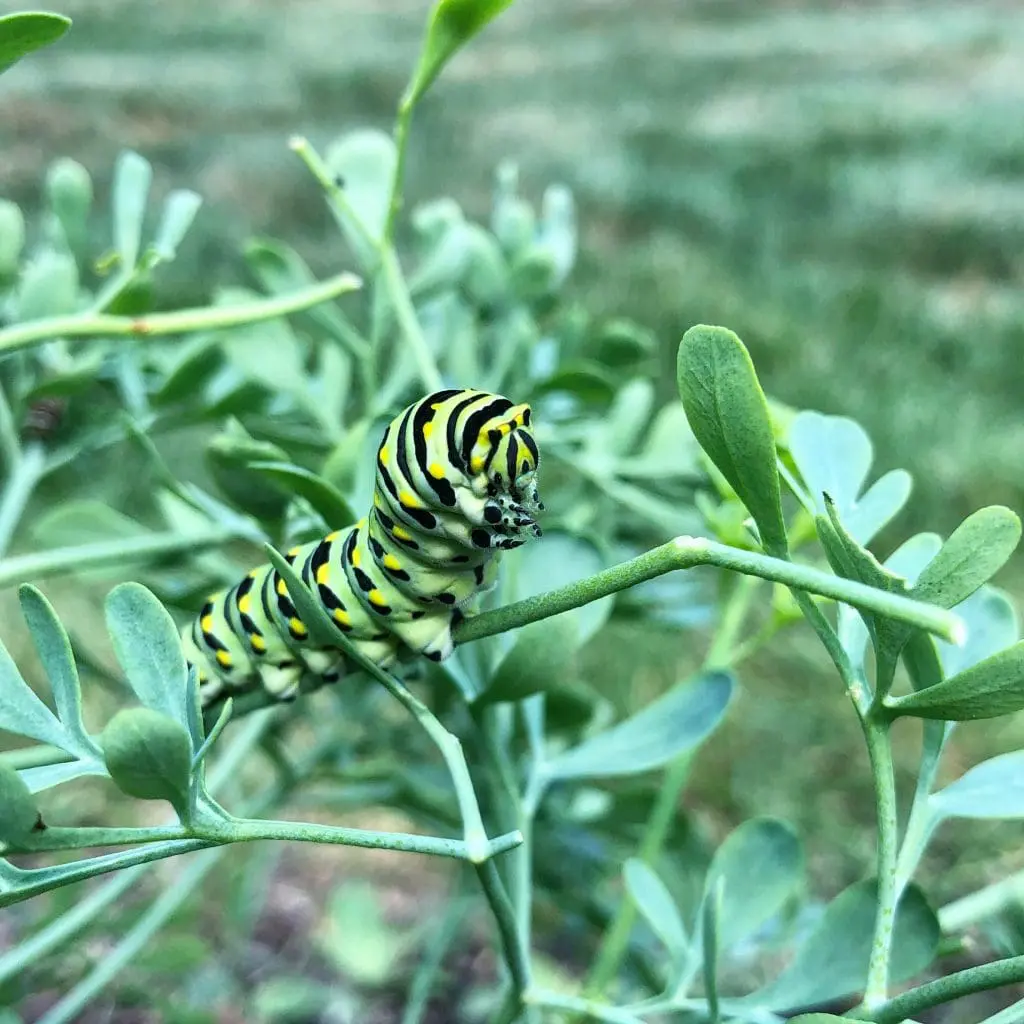
Insects have been especially hard hit. The New York Times reports that in the US “the population of monarch butterflies fell by 90 percent in the last 20 years, a loss of 900 million individuals; the rusty-patched bumblebee, which once lived in 28 states, dropped by 87 percent over the same period.”
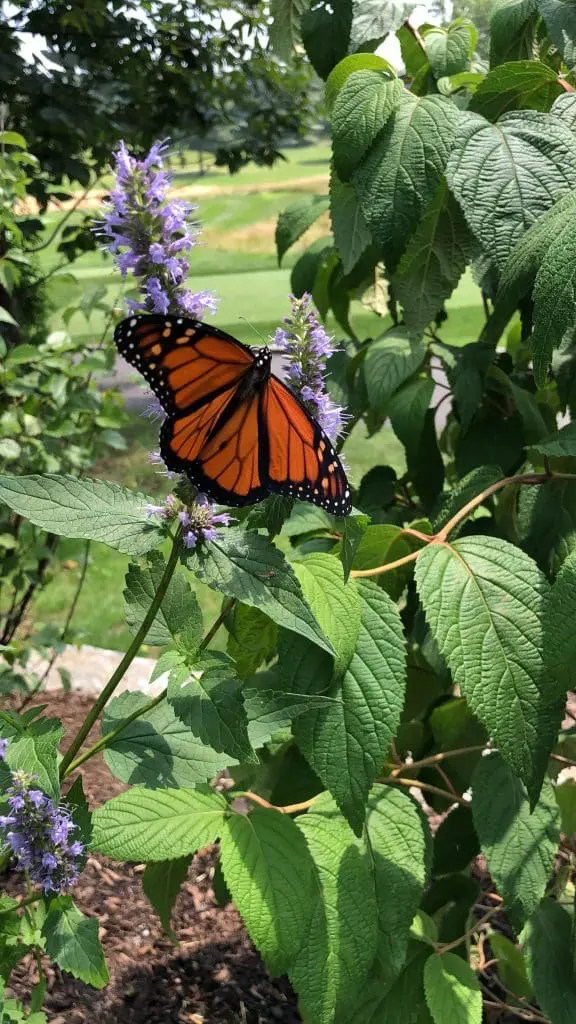
Act Locally for Pollinators & Wildlife
Fortunately, biodiversity decline is a global issue that can be addressed locally – on your property and in your community! It is true that there is strength in numbers. We are thrilled with the efforts of the Pollinator Pathway organization in mapping, linking and promoting a network of pollinator-friendly landscapes and gardens in Westchester County and Fairfield county — learn more here.
Green Jay Landscape Design has designed and installed a broad range of habitat gardens, from organic meadows, to front-yard pollinator gardens, to bird sanctuaries, to woodland wildlife gardens, fish and turtle ponds, bog / wetland habitats, and more! Whatever your site conditions or design dreams are, we can accomplish it!
Below are some tips for considering what designed habitat is right for you:
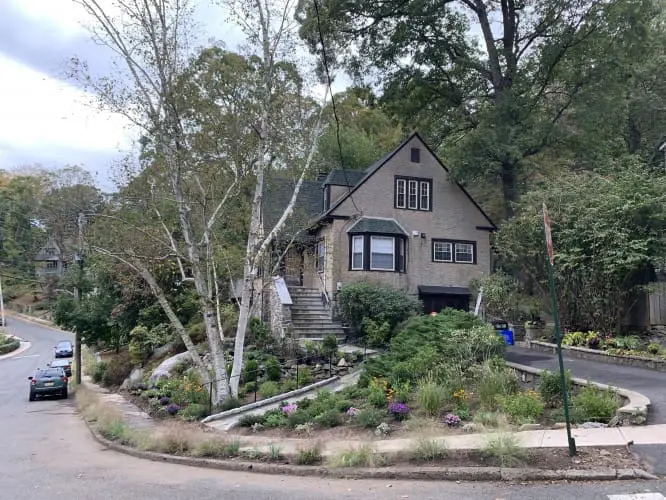
Front Yard Pollinator Gardens: Think about plants that have multi-season aesthetic and ecological value. We like to mix native ornamental grasses and flowering shrubs (at larger sizes) with perennials so that the front yard starts off looking *full*. Always be sure to include garden paths – they make weeding and maintenance much easier, and allow you to observe and enjoy every pocket of your garden! Check out our previous blog post, Designing An Organic Pollinator Garden for tips! Learn more about our lawn-replacement front yard pollinator garden designs in Hastings, NY (above photo), Putnam Valley, NY, Port Chester, NY, Mamaroneck, NY and Dutchess County, NY.
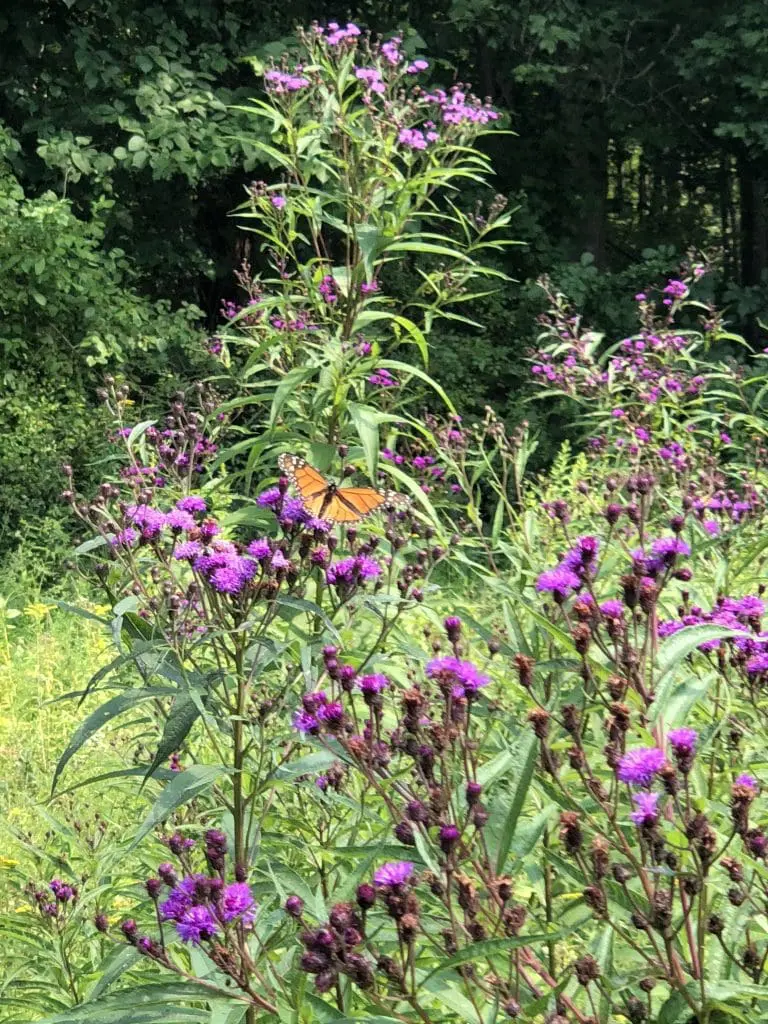
Organic Meadows: For large areas, seed will be the most economical option, but know that some native wildflowers do not flower for the first few years, while others may only last for a few years! Understand that your meadow is an evolving canvas and you will find joy in the changing colors, heights, textures, and visitors! Site preparation is extremely important in meadows; if you disturb the weed seed bank in the soil, maintenance can be difficult. Learn more about Our Promise as Landscape Ecologists.
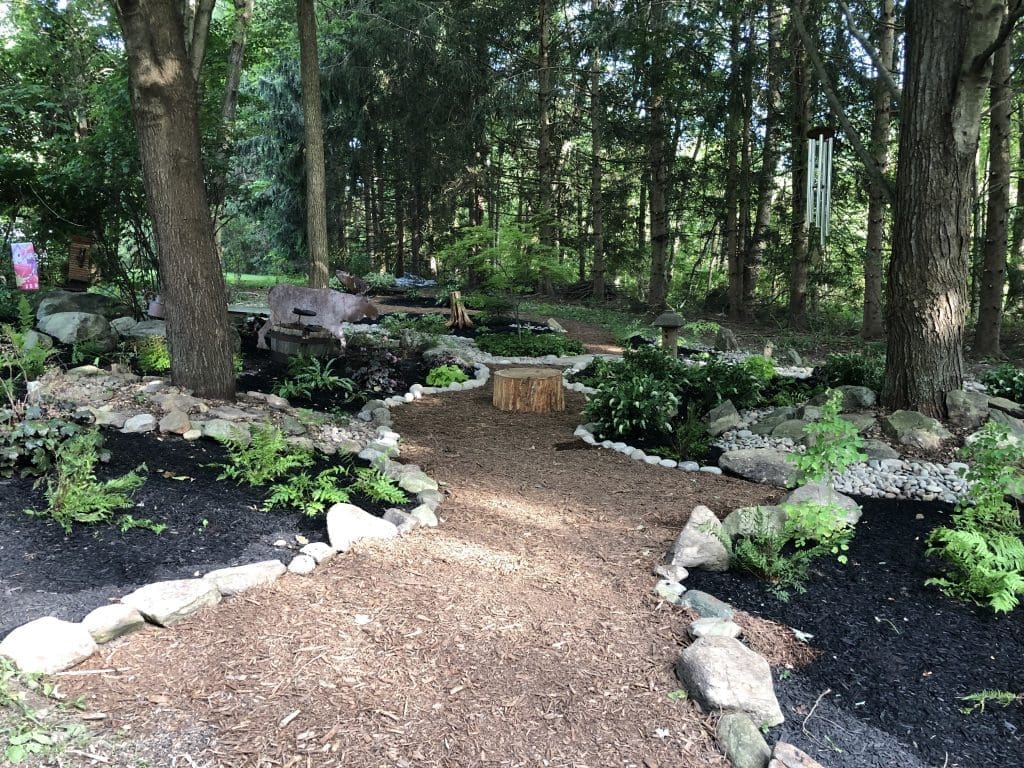
Woodland Habitat Gardens: Shrubs will be your MVP for ecological value and design weight in a dappled / part shade woodland garden. We love these native shrubs, and so do the birds: shrub dogwood (Cornus spp.), chokeberry (Aroniaspp.), winterberry (Ilex verticilata – can also tolerate full shade), inkberry (Ilex glabra), and summersweet (Clethra alnifolia), to name a few. If you are dealing with full shade, native ferns (we love Christmas Fern, Cinnamon Fern, and New York Fern) and ground cover are essential. Learn more about our designed woodland habitat gardens in Patterson, NY, and Bedford Hills, NY.
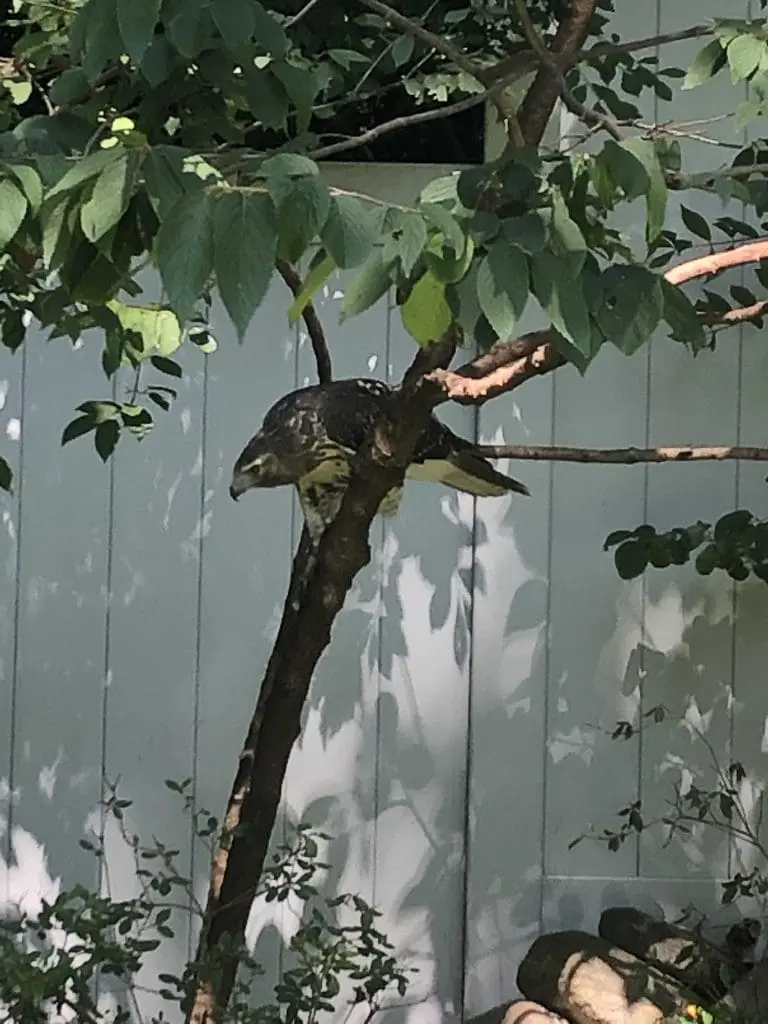
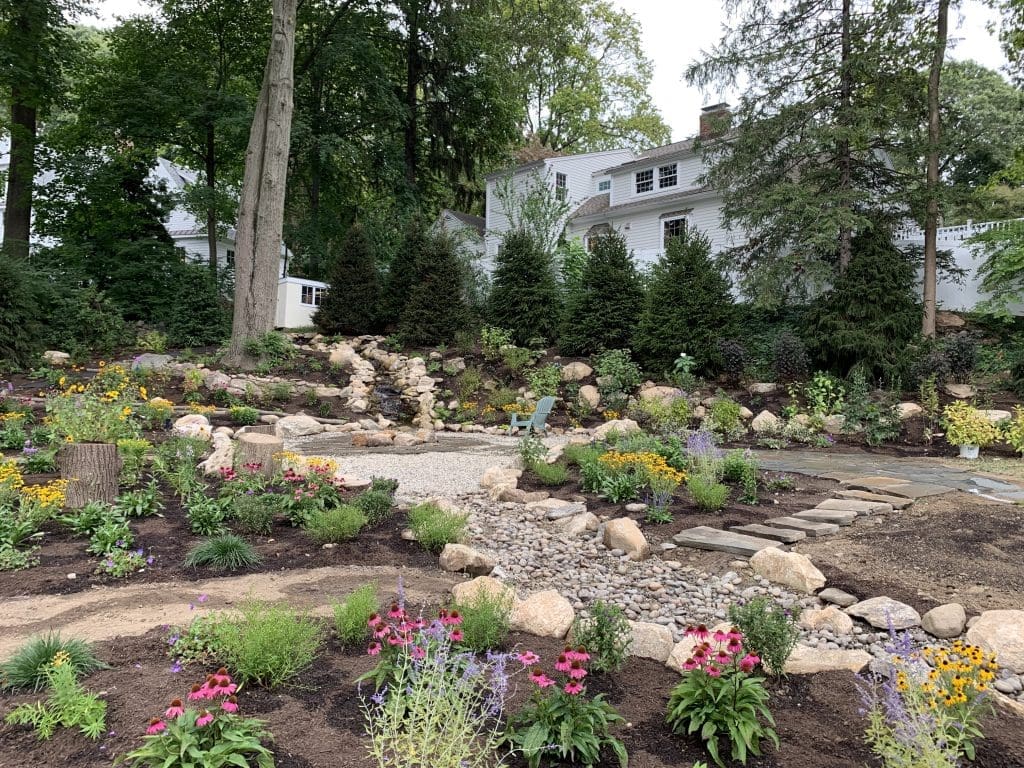
Bird Sanctuaries: To attract birds to your property, you will need to meet their habitat requirements. This means native shrubs for nesting sites and fall/winter berries (late season food!). Birds need insects, especially caterpillars, to feed their young, which means you should have pollinator-attracting perennials on-site (be sure to have enough plants: entomologist Doug Tallamy estimates that one clutch of chickadees requires 6,000 – 9,000 caterpillars to raise to maturity!) Water is another critical feature – birds love to bathe themselves in shallow pools! You don’t need a large estate to create a bird habitat; a well-designed bird garden will be appreciated by local and migrating birds year-round!
Read about our design and construction of a 100% organic bird sanctuary landscape — part one discusses site prep and storm water, part two dives into design decisions and native plants.
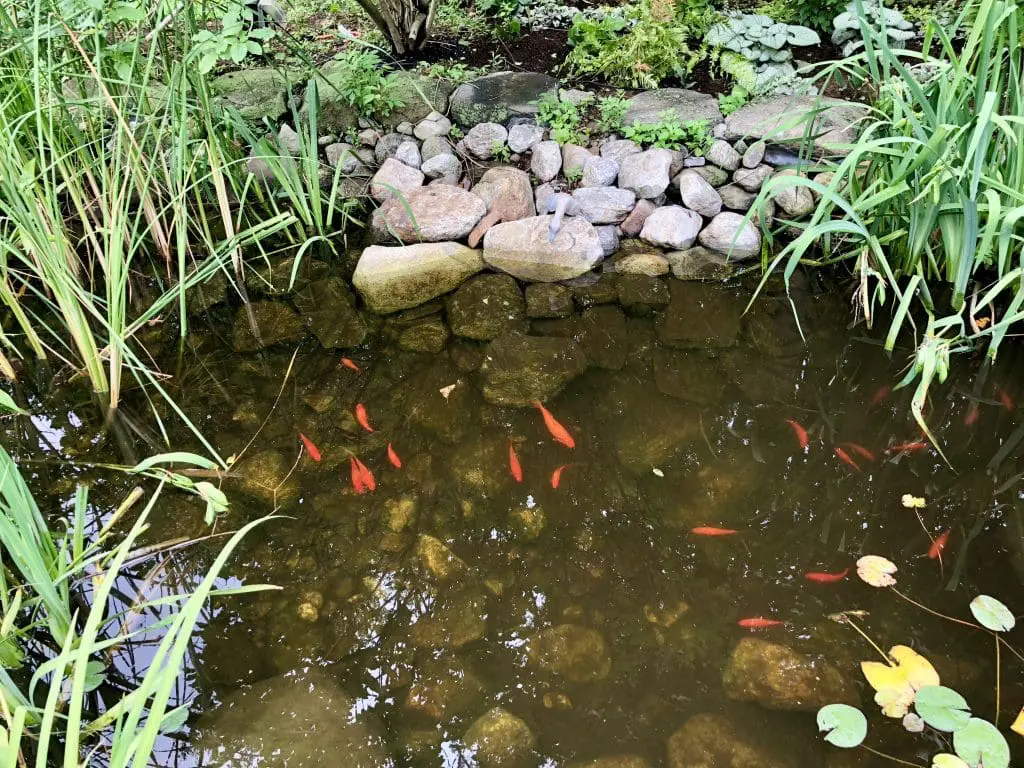
Fish and Turtle Ponds: Water quality is extremely important in your constructed pond if you plan on making it a habitat for fish, turtles or any other aquatic wildlife. When designing a pond, aeration is key to prevent algal growth that can eventually overpower all other life in the pond. We often design a waterfall or stream to create this water movement and add a lively focal point. Additional aerators, UV sterilizers, and filters may also be necessary. Water features are also a great way to attract dragonflies – as nymphs they eat mosquito eggs and larvae! A vegetative buffer around your pond is essential to absorb any nutrient runoff before it reaches the water.
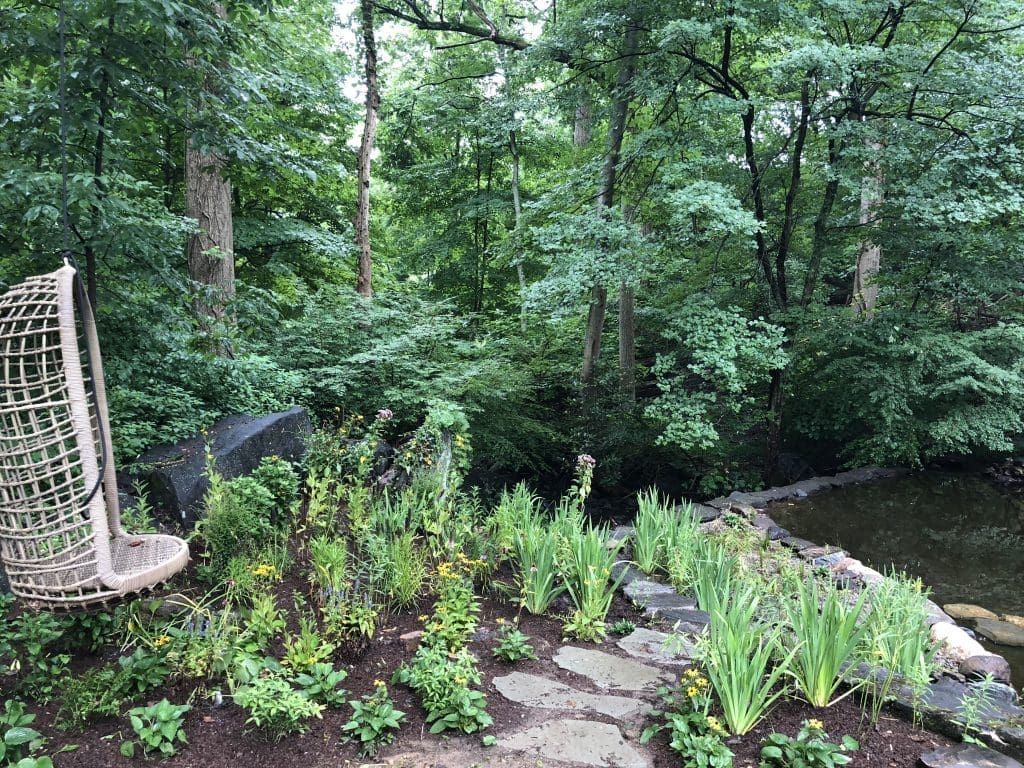
Wetland / Bog Gardens: Restoring a wetland with native wetland plants improves the water filtration capacity and makes the wetland more productive and valuable. Likewise, we have planted bog gardens to help improve water quality in existing ponds. Wet meadows are some of the most diverse ecosystems on earth, so wherever you have the opportunity to preserve and restore a wet meadow it should be seized! The number of pollinators and birds that make their home there will amaze you.
Learn more about our projects:
Native Bog Garden & Pond Restoration project in White Plains, NY
Natural Swimming Pond & Bog Garden Blog & Gallery in Larchmont, NY
Fish Pond Restoration & Stream Construction Project Blog & Gallery in New Canaan, CT
Wetland & Pond Restoration in South Salem, NY.
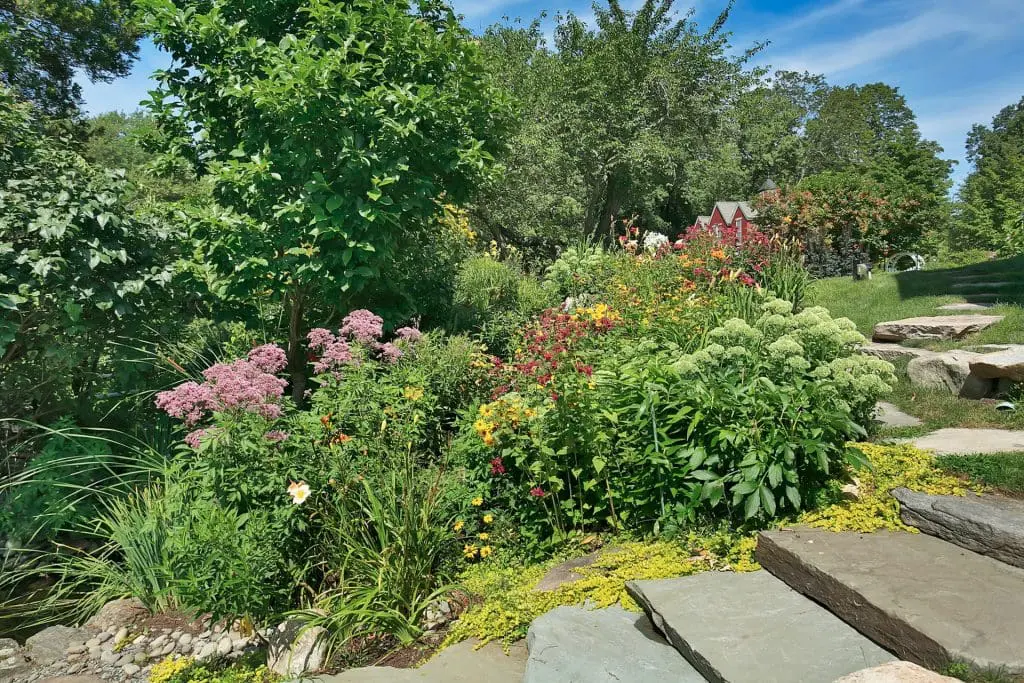
We hope this helped you consider the value of a designed habitat on your property! Please call us (914)-560-6570 or contact us to discuss your landscape design project!
—
Feature Photo (Top) by Jessica Kirste courtesy of Feeder Watch